Rossio Square in Lisbon (Praca Dom Pedro IV) - sightseeing, interesting facts, map
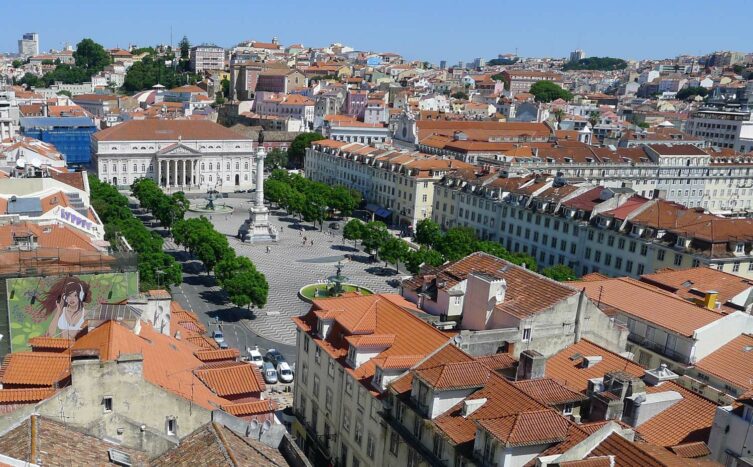
The force of habit
The name of the square in use today "Dom Pedro IV work”Is used by the people of Lisbon reluctantly (or not at all). More than 150 years have passed since the name was changed, and the city's inhabitants have still not accepted it. They still use the old one: Rossio Square, which in the common sense should be understood as: municipal squareor common square.
New patron
The change of name was related to the erection of a monument to the king on the square Peter IV (Pedro IV). The first version of the monument quickly became an object of mockery. It had a primitive form of a low, simple pedestal.
The derisive name "o galheteiro" (flask) quickly stuck to it.
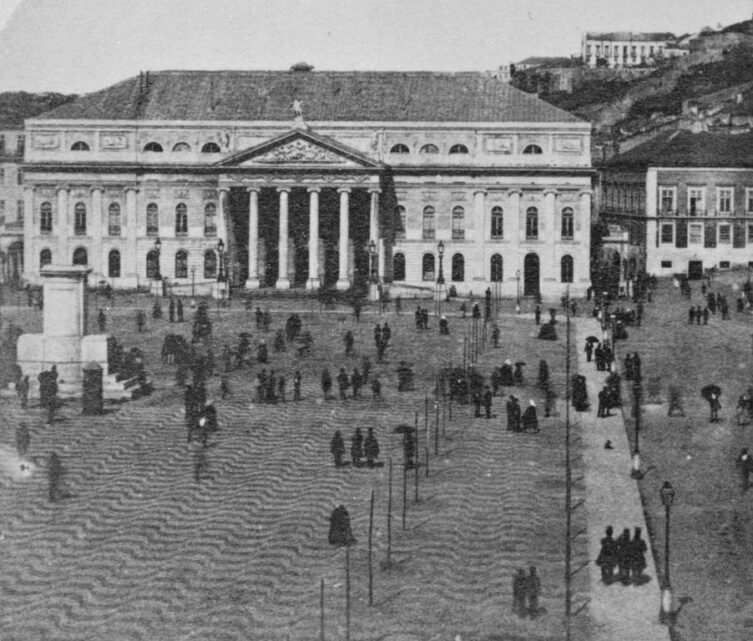
Probably because, as an object of ridicule, the monument rather did not glorify the name of the king, it was demolished in 1864 (12 years after its construction) and in its place in 1870 a new, much more impressive, 23-meter high monument was erected, which still stands here today. Unfortunately, he wasn't immune to malicious jokes either. There is a legend in the city that the figure standing on the top ... does not represent King Pedro IV at all!
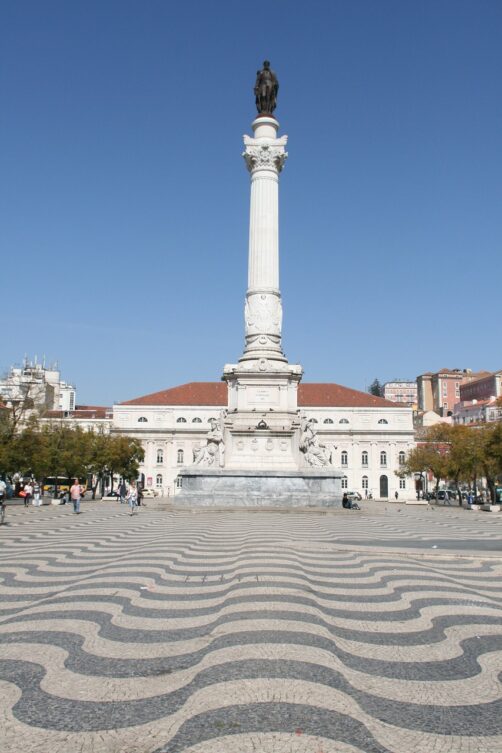
According to local sources, Pero IV really stands at the top of the monument Maximilian I. (Emperor of Mexico).
The statue was commissioned and designed for Maximilian I, but shortly before its completion, Maximilian I (an Austrian prince, seated on the Mexican imperial throne by force) was captured and executed by the Mexicans. The almost finished figure of the Emperor of Mexico was advantageously bought by the Portuguese and placed on the top of the column as Pedro IV.
It is true that historians have been trying to fight the urban legend for over 150 years by examining the statue and presenting evidence that it actually depicts the figure of Pedro IV, but the city legend still turns out to be stronger, and the city's inhabitants still use the old name: Rossio Square.
A dark past
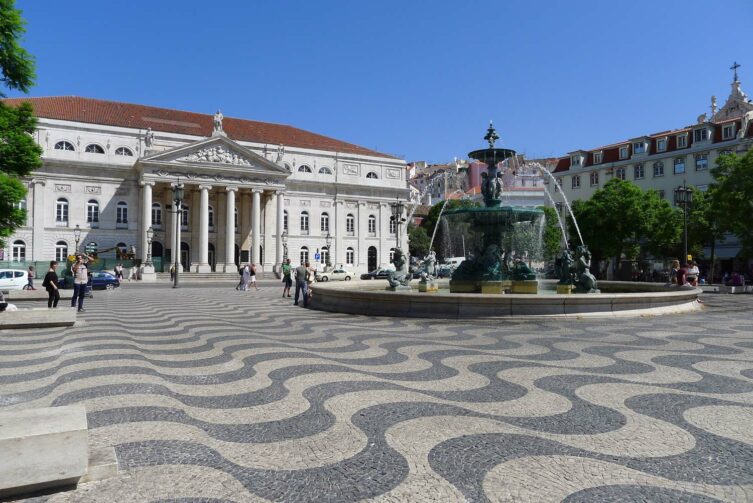
While standing in the square, pay attention to the building of the National Theater of Maria II (Teatro Nacional D. Maria II) closing it on the north side. The theater was built during the reconstruction of the city after the earthquake (in 1755), on the ruins of another building, extremely important for the history of Europe. He was standing here before the earthquake Estaus Palace, built to host foreign dignitaries and nobles visiting Lisbon. Over time, however, it changed its function.
After the appointment of the Inquisitor General of Portugal by Pope Paul III, the Estaus Palace became the headquarters of the Portuguese Inquisition, and Rossio Square became the main arena for corporal punishment, executions, burning pyres and other public show activities of the Inquisition.
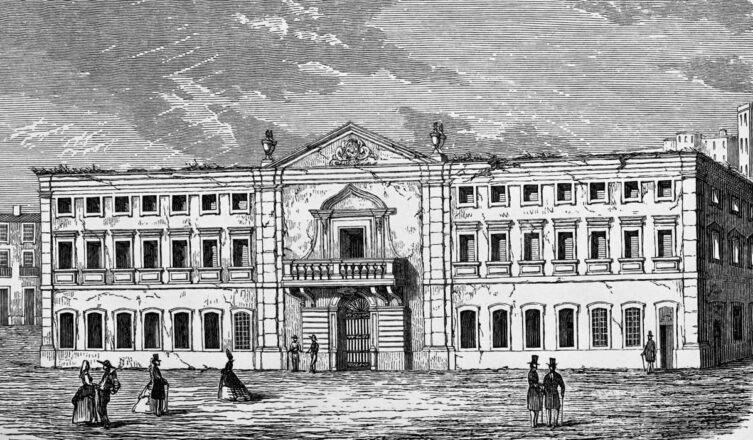
image source: Wikipedia in the public domain
The car da fe
The Inquisition, fond of stimulating the emotions of the crowd, bloody public "spectacles", enjoyed carrying out the so-called "Auto-da-fe", or rituals of public penance of heretics (translated from Portuguese: act of faith).
Preparations for the auto-da-fe began a month in advance, but did not begin until a sufficient number of convicts with inquisition sentences had gathered. On the eve of the ceremony, the first spectators gathered, then the night vigil and prayers began, which ended at dawn with mass and breakfast.
The ceremony began with a procession of prisoners who marched dressed in yellow, baggy clothes (the so-called sanbenito). There were various symbols on the prisoners' costumes and bodies, related to their offenses and facilitating the identification of a specific convict. Their identity was kept secret until the very end. Without this specific code, it would be easy to confuse a condemned man going to the flog with the one going to the stake. Moreover, the prisoners themselves did not know their own sentences until the very end !!! Walking in the procession, they had no idea how this march would end for them.
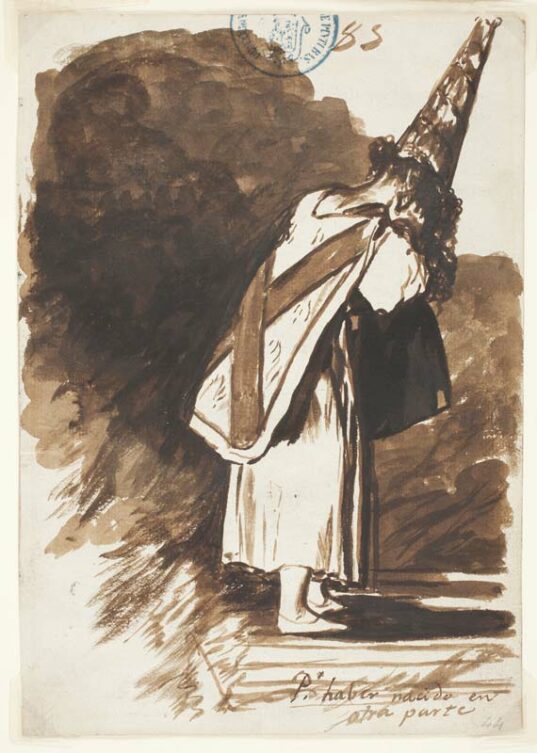
Painting by Francisco Goya, from the exhibition of the Prado Museum in Madrid
source: Wikipedia, under the public domain
The next step in the ceremony was the reading of sentences and punishments. Those innocent or suspended fell to their knees in thanksgiving.
Most often, the sentences of convicted persons were executed immediately.
The entire auto-da-fe ceremony usually lasted several hours and was also considered a form of penance for the audience gathered there. Observers participating in the ceremony were emotionally involved in it, also confronting their own sins.
The heart of the city
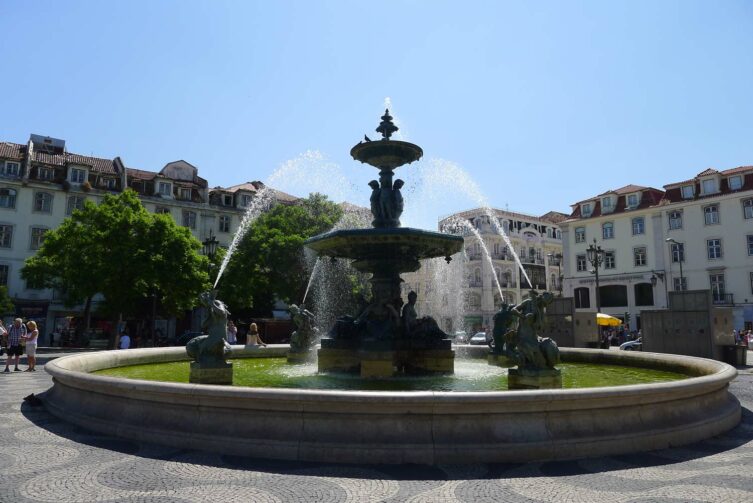
Rossio Square, which, apart from auto-da-fe, also witnessed peaceful celebrations, rebellious gatherings and even bullfighting, is today a favorite meeting place for Lisbon residents and tourists. It is always full of people, and on the occasion of various holidays, festivities and parties accompany the celebration.
If you want to let your head and legs breathe a bit, look around the square behind the Nicola cafe. It is a cult and important place for the history of Portuguese literature. At the beginning of the XNUMXth century, famous writers met there and improvised in front of the audience, creating many famous sonnets and satires live. It's worth sitting down and drinking a coffee.
For the curious:
Right next to Rossio Square there is the so-called “the church burned down".
You can see the interior of the church in the panorama below (you can rotate it and zoom it in).
The burnt church is built in 1241 church of st. Dominica (Igreja de São Domingos), which for many centuries was the largest and main church of Lisbon and the Inquisition. It was from it that the processions of prisoners leading to Rossio Square during the auto-da-fe began, and until 1910 the wedding ceremonies of the kings of Portugal took place there.
The church was badly damaged during two earthquakes (in 1531 and 1755), the second of which was particularly badly damaged. It was rebuilt more than fifty years later, but in 1959 another disaster struck it. The church was destroyed by a fire that started with one of the candles at the altar. Virtually all the furnishings of the church and almost all the works of art in it were burnt. The handkerchief was completely destroyed Lucia dos Santos and half the scarf Marta's Hyacinthswhich they used as children during the apparitions they experienced on May 13, 1917 in Fatima.
After the fire, the church was put into use only almost forty years later (in 1997). During the renovation, it was decided that the traces of the fire would not be removed and the interior of the church would not be reconstructed. On the contrary! Attempts were made to maintain the scale of damage caused by the fire. We can see blackened fragments of walls, columns and structural elements of the building cracked by the temperature, and decorations destroyed by the raging fire. Of course, it makes a stunning impression. It is rare to be able to visit a building destroyed by fire.
Useful data
Rossio Square (Dom Pedro IV work), GPS coordinates:
38°42’49.6″N 9°08’21.7″W
38.713787, -9.139358 - click and route
Nicola's cafe, GPS coordinates:
38°42’47.4″N 9°08’22.9″W
38.713165, -9.139699 - click and route
St. Dominic (burnt church), GPS coordinates:
38°42’52.9″N 9°08’19.5″W
38.714689, -9.138761 - click and route
Lisbon sightseeing itinerary
This post is part of a very detailed Lisbon sightseeing itinerary that I have developed. The plan is available for free and you can see it on the website: Lisbon sightseeing plan - map, attractions, monuments, tickets, accommodation, interesting facts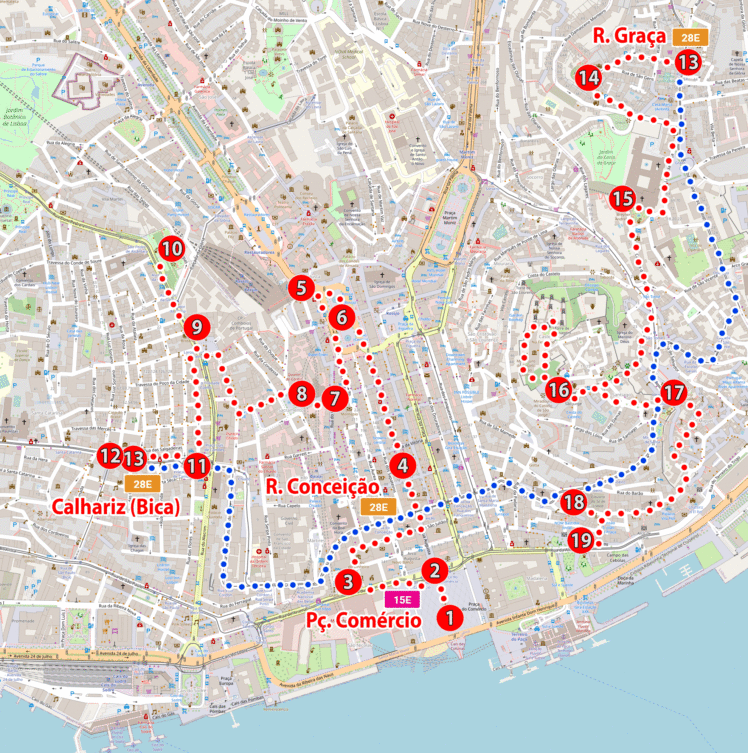
6 is Rossio Square
Accommodation in Lisbon
To facilitate the search for accommodation, I will present here some interesting (in my opinion) proposals from the historic center of Lisbon (from the vicinity of the very center of the old part of the city, i.e. the Baixa district). Don't consider them "just the best". They are an interesting proposition and can be a good choice or a good starting point for further research. Clicking on any of these hotels will take you to the offer details and (perhaps even more importantly) will display a list of similar offers. Thanks to this, you will immediately gain access to a list of interesting accommodation, which you can then filter and view according to your preferences.
Hotel INN Rossio - [click]
Esqina Urban Lodge – [click]
Dream Chiado Apartments - [click]
Portugal sightseeing plan
This entry is part of a complete one Portugal sightseeing plan - [click]. The guide contains plans, maps and descriptions of specific sightseeing routes.To see all currently available descriptions of attractions in Portugal, click on the link: Continental Portugal - [click].
Safe car rental guide: Portugal - car rental without credit card, no deposit
Important to me!
Give the article a good rating (5 stars welcome 😀)!It's free, a for me it is very important! The blog lives on visits and thus has a chance to develop. Please do it and ... thank you in advance!
If you like my guides, you will certainly find the one I created useful guide catalog - [click]. There you will find ready-made ideas for your next trips, descriptions of other tourist destinations and an alphabetical list of guides divided into countries, cities, islands and geographical regions.
I also post link to Facebook profile - [click]. Come in and press "Follow"then you will not miss new, inspiring posts.
Unless you prefer Instagram. I'm not a social media demon, but you can always count on something nice to look at on my instagram profile - [click]. The profile will gladly accept any follower who likes it.
I make the content I create available free of charge with copyright, and the blog survives from advertising and affiliate cooperation. So, automatic ads will be displayed in the content of the articles, and some links are affiliate links. This has no effect on the final price of the service or product, but I may earn a commission for displaying ads or following certain links. I only recommend services and products that I find good and helpful. Since the beginning of the blog's existence, I have not published any sponsored article.
Some of the readers who found the information here very helpful, sometimes ask me how you can support the blog? I do not run fundraisers or support programs (type: patronite, zrzutka or "buy coffee"). The best way is to use links. It costs you nothing, and support for the blog is self-generating.
Pozdrawiam




Well developed. How much work did you have to put into it. GPS, links to Google maps. Will be very helpful in Lisbon in May 2023. Thanks